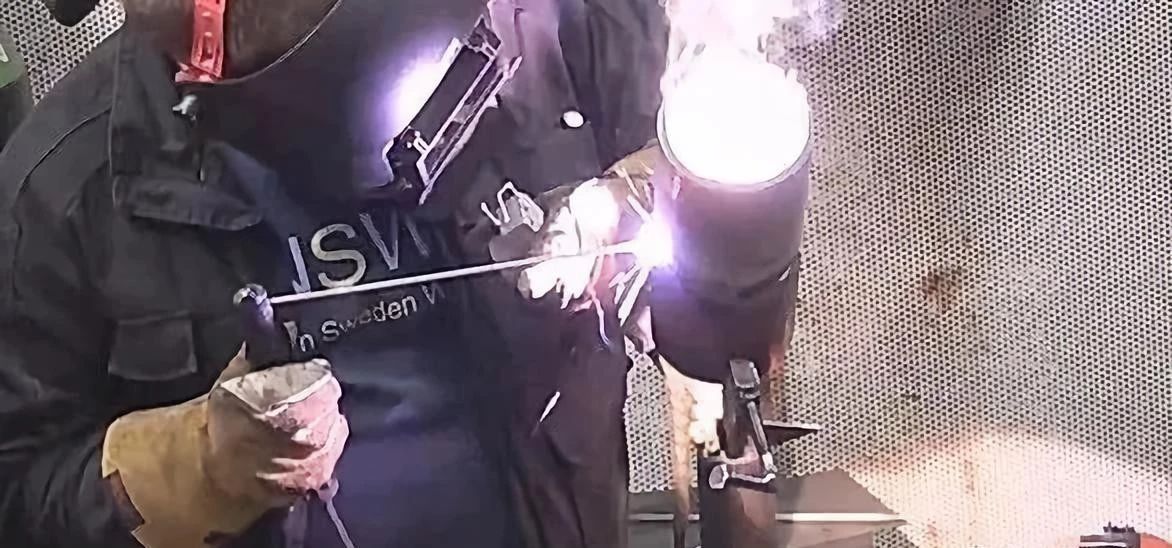High-carbon steel refers to w (C) higher than 0.6% of carbon steel, which has a greater tendency to harden than medium-carbon steel, and the formation of high-carbon martensite, more sensitive to the formation of cold cracks.
At the same time, the martensite organization formed in the heat-affected zone of welding, hard and brittle performance, resulting in a significant drop in the plasticity and toughness of the joint, so the weldability of high-carbon steel is quite poor, must take a special welding process, in order to ensure the performance of the joint.

Therefore, in the welded structure, generally rarely used. High-carbon steel is mainly used for machine parts requiring high hardness and wear resistance, such as shafts, large gears and couplings, etc.
In order to save steel, simplify the processing process, these machine parts are also often used to weld the structure of the combination. In the manufacture of heavy machinery, the welding of high-carbon steel components is also encountered.
In the development of high-carbon steel welded parts of the welding process, should be a comprehensive analysis of the various welding defects that may arise, and take the corresponding welding process measures.
1 high-carbon steel weldability
1.1 Welding method
High-carbon steel is mainly used for high hardness and high wear resistance of the structure, so the main welding methods are electrode arc welding, brazing and submerged arc welding.
1.2 Welding materials
High-carbon steel welding generally does not require the strength of the joint and the base material. When welding electrode arc welding is generally used to remove sulfur capacity, low hydrogen content of diffusion of the deposited metal, good toughness of low-hydrogen type welding rod.
In the requirements of the weld metal and the parent material and other strength, should be selected with the corresponding level of low-hydrogen welding rod; in the weld metal and the parent material and other strength, should be selected with a strength level lower than the parent material of low-hydrogen welding rod, remember not to choose the strength level than the parent material high welding rod.
If the base material is not allowed to preheat when welding, in order to prevent cold cracking in the heat-affected zone, austenitic stainless steel welding rod can be used to obtain good plasticity, cracking resistance of austenitic organization.
1.3 Bevel preparation
In order to limit the mass fraction of carbon in the weld metal, should reduce the fusion ratio, so the general use of U- or V-shaped bevels when welding, and pay attention to the bevel and the bevel on both sides of the 20mm range of oil, rust and other processing clean.
1.4 Preheating
When using structural steel welding rod, welding must be preheated before, preheating temperature control at 250 ℃ ~ 350 ℃.
1.5 Interlayer processing
Multi-layer multi-channel welding, the first welding using small diameter welding rod, small current welding. Generally the workpiece will be placed in the semi-standing welding or the use of welding rod lateral swing, in order to make the entire heat-affected zone of the parent material are heated in a short period of time, in order to obtain preheating and insulation effect.
1.6 Post-weld heat treatment
Immediately after welding, the workpiece is placed in a heating furnace and held at 650°C for stress relief annealing.
2 high-carbon steel welding defects and preventive measures
Due to the high-carbon steel hardening tendency is very large, in the welding is prone to thermal cracking and cold cracking.
2.1 Preventive measures for thermal cracking
1) control the chemical composition of the weld, strict control of sulfur, phosphorus content, appropriate to improve the manganese content, in order to improve the weld organization, reduce segregation.
2) Control the shape of the weld section, the width to depth ratio to be slightly larger, in order to avoid the deviation of the centre of the weld.
3) The rigidity of the welded parts, should choose the appropriate welding parameters, the appropriate welding sequence and direction.
4) If necessary, take preheating and slow cooling measures to prevent the generation of thermal cracks.
5) improve the alkalinity of the welding rod or flux, in order to reduce the impurity content of the weld and improve the degree of segregation.
2.2 Cold cracking prevention measures
1) preheating before welding and slow cooling after welding, not only can reduce the hardness and brittleness of the heat-affected zone, but also accelerate the diffusion of hydrogen out of the weld.
2) Selecting suitable welding measures.
3) The use of suitable assembly and welding sequence, reduce the constraint stress of the welded joint, improve the stress state of the welded parts.
4) Select suitable welding materials, dry the welding rod and flux before welding, and use them as you go.
5) Before welding should be carefully removed from the surface of the base metal around the bevel water, rust and other dirt to reduce the content of hydrogen diffusion in the weld.
6) The hydrogen should be removed immediately before welding so that the hydrogen can escape from the welded joint.
7) Immediately after welding, the stress relief annealing process should be carried out to promote the diffusion of hydrogen outwards in the weld.
3 Conclusion
High-carbon steel due to the higher carbon content, hardenability and weldability is poor, welding is easy to produce high-carbon martensite organization, easy to produce welding cracks, so in the high-carbon steel welding, a reasonable choice of welding process, and timely measures to reduce the emergence of welding cracks, improve the performance of welded joints.
Source: Reprint
Disclaimers.
This article is a reproduction of the network, the copyright belongs to the original author. If the copyright issue, please contact us, we will be the first to remove the content.

![]() September 20, 2022
September 20, 2022

